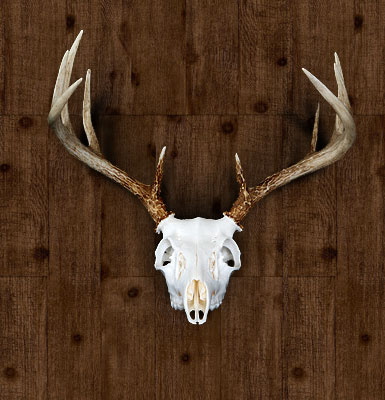Preparing a lifelike taxidermy mount is an artistic achievement, and a means of not only preserving hunting trophies or biological specimens,
but of creating a realistic nature scene. However, like any art form, taxidermy takes some effort to learn. While some taxidermy hobbyists will be lucky enough to know an accomplished taxidermist they can learn from, others will find that kits for creating mounts are an invaluable resource for learning.
Taxidermy kits usually come with a couple key ingredients, though the type of kit and the animal it’s intended for will impact what’s included, so it‘s important to know what type of animal you plan to learn to work with before purchasing the materials. All of them generally include the powders, pastes, or solutions needed to properly preserve the skin of the animal, while some others might include injectable solutions for use on fish mounts, which often require leaving the head and tail of the animal intact. Since fish and birds require some additional considerations that mammals don‘t, beginners are usually recommended to start with mammals, like squirrels.
 Mannequins themselves may or may not come in a kit. Often, due to the wide range of sizes and poses available for most species, they are sold separately. These are usually made of polyurethane foam, and developed by wildlife artists to be anatomically correct and realistically proportioned. Some mannequins are different for either gender of an animal, so it’s important to know some things about the specific animal you’re going to be working with before you get started, if you don’t intend to keep a good selection of mannequins on-hand. Eyes, for the same reason, are generally not included.
Mannequins themselves may or may not come in a kit. Often, due to the wide range of sizes and poses available for most species, they are sold separately. These are usually made of polyurethane foam, and developed by wildlife artists to be anatomically correct and realistically proportioned. Some mannequins are different for either gender of an animal, so it’s important to know some things about the specific animal you’re going to be working with before you get started, if you don’t intend to keep a good selection of mannequins on-hand. Eyes, for the same reason, are generally not included.
Kits also come with guides, and sometimes video, on how to perform all of the steps of your taxidermy project. Depending on how you learn best, whether you choose a kit with a written guide or a video is up to you. However, video might be a bit easier for hobbyists who “learn by doing,” since it’s easy to turn the video on and work on your project at the same time, pausing and rewinding as necessary. The best guides will show every step of the project in detail, from skinning the animal to mounting it, though general how-tos exist on the internet for novices who need more help in a specific area.
Though it’s hard for a beginning taxidermy hobbyist to choose which animal to learn on first, forums exist online for helping beginners get their feet wet and introduce them to the art of taxidermy. By following the advice of others, developing an idea of what they would like to create, and purchasing a good kit, even novice taxidermists can create lovely, realistic mounts in no time at all.

